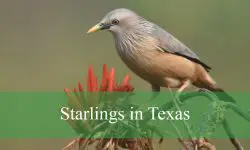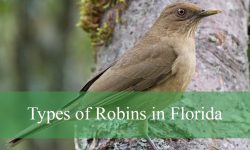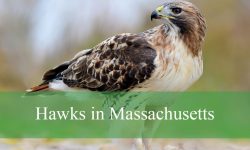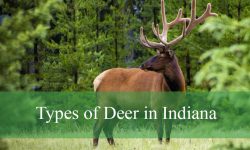Orioles are among the most colorful and melodic birds found in Wisconsin during the summer months. Their bright plumage and distinct songs make them favorites for birdwatchers.
Wisconsin hosts several oriole species, from the common Baltimore Oriole to rare vagrants like Bullock’s and Hooded Orioles. Observing them provides a glimpse into the state’s rich avian diversity, especially during migration.
This guide covers the four species found in Wisconsin, detailing their appearance, size, behaviors, habitats, best times to observe, and tips for spotting the rarer visitors.
Different Types of Orioles Found in Wisconsin
Baltimore Oriole
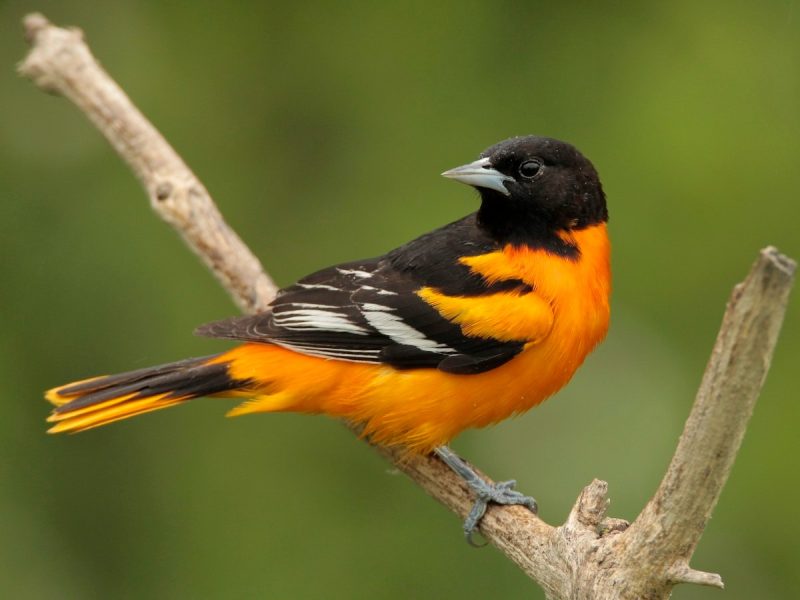
The Baltimore Oriole is the most familiar oriole species in Wisconsin and a favorite among backyard birdwatchers. Adult males are striking with brilliant orange underparts, black heads, and black wings highlighted by bold white wing bars. Females and juveniles are more subdued, showing yellow-orange tones with grayish-brown wings. This medium-sized songbird measures about 7–8 inches (18–20 cm) in length with a wingspan of 9–12 inches (23–30 cm). Their flute-like songs are easily recognizable and often heard from treetops in spring and summer.
This species typically arrives in Wisconsin during early May, signaling the height of spring migration. They are especially attracted to blossoming trees and shrubs, where they search for insects, nectar, and fruit. Baltimore Orioles are well-known for visiting feeders stocked with orange halves, grape jelly, and nectar, making them one of the few warbler-like birds that easily adapt to human offerings.
Nesting habits of the Baltimore Oriole are fascinating. Females weave hanging basket-shaped nests using grasses, plant fibers, and even yarn or string, suspending them from the tips of tree branches. This design protects the eggs and young from many predators. Their breeding season usually extends through June and July, and they raise one brood per year in Wisconsin.
Baltimore Orioles prefer open woodlands, forest edges, parks, and suburban areas with large deciduous trees. They thrive across most of Wisconsin during the summer but migrate to Central America, northern South America, and the Caribbean for winter. Spotting them is often easiest in orchards, along riversides, or in neighborhoods where fruiting plants and tall trees provide both food and nesting sites.
Orchard Oriole
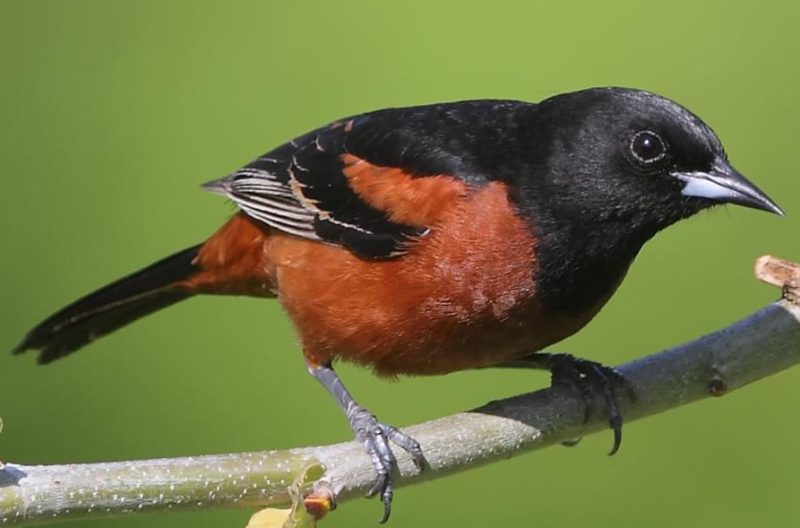
The Orchard Oriole is smaller and less common than the Baltimore Oriole, but it is also a summer resident in Wisconsin. Adult males have rich chestnut-colored underparts paired with a black head, back, and wings, while females are pale yellow-green with faint wing bars. This species is more petite than the Baltimore, measuring about 6–7 inches (15–18 cm) in length with a wingspan of 9–10 inches (23–25 cm). Their coloration and size make them distinctive, though more secretive than Baltimore Orioles.
They arrive in Wisconsin around the same time as Baltimore Orioles but are generally more localized, preferring habitats such as orchards, farmland edges, and groves of trees near water. Orchard Orioles often stay in the canopy or dense foliage while foraging for insects, nectar, and fruit, making them harder to spot than their larger relatives.
Orchard Orioles are skilled nest builders. Females construct pouch-like nests made of grasses and plant fibers, usually placed in shrubs or small trees rather than the high branches preferred by Baltimore Orioles. Their breeding season is slightly earlier, with many departing the state as early as mid-July, making their summer stay in Wisconsin relatively short.
This species favors rural and semi-rural landscapes and is less likely than Baltimore Orioles to visit backyard feeders. Birdwatchers hoping to see Orchard Orioles in Wisconsin should focus on farmlands, orchards, and riverside thickets, where their distinctive songs and chestnut-and-black plumage stand out against the greenery.
Bullock’s Oriole

Bullock’s Oriole is a rare vagrant in Wisconsin, typically seen only during migration. Adult males have bright orange underparts, black heads, and white wing bars, which makes them resemble the Baltimore Oriole, but they can be distinguished by a black line extending down the sides of their breast and a slightly larger size. Females and immature birds are duller, with yellowish-orange underparts and grayish backs. This species measures about 7–8 inches (18–20 cm) in length with a wingspan of 10–12 inches (25–30 cm).
These orioles usually appear in Wisconsin during spring or fall migration, often in open woodlands, edges of forests, or along riversides. Their presence is unpredictable, and sightings are considered exciting for local birdwatchers. Bullock’s Orioles feed on insects, nectar, and small fruits, and they may occasionally visit feeders stocked with oranges or grape jelly if available.
Nesting is generally observed in their western breeding range, so in Wisconsin, they are usually non-breeding visitors. When present, they are often solitary or found in small groups, foraging actively in tree canopies. Their flight is strong and direct, typical of oriole species, and their melodious whistles resemble those of other orioles but with subtle differences.
Because Bullock’s Orioles are uncommon in Wisconsin, spotting them requires careful attention during migration periods. Birdwatchers should focus on areas where Baltimore Orioles are active, as Bullock’s may mix in, and early morning hours are often the best time for observation. Photographs or field notes are valuable for confirming this rare species.
Hooded Oriole
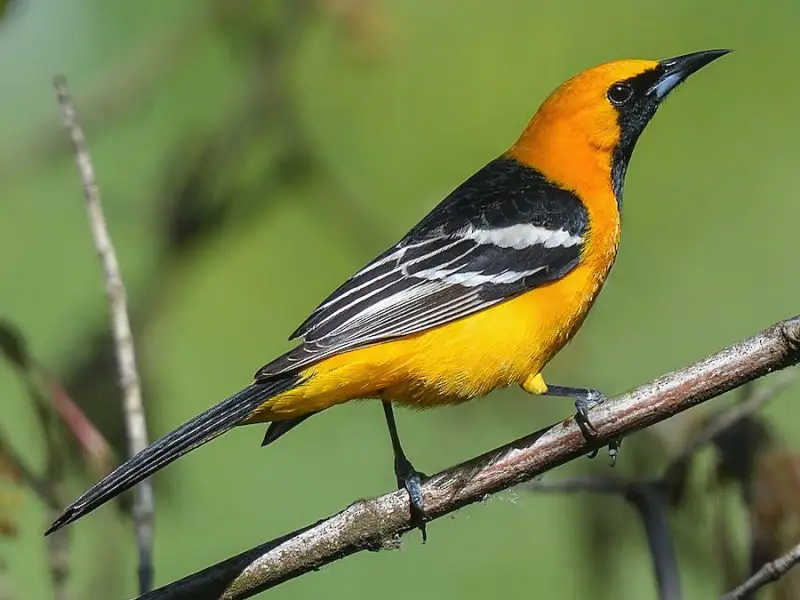
The Hooded Oriole is a very rare vagrant in Wisconsin, mostly appearing far outside its usual southwestern range. Adult males are striking, with bright orange underparts, black throats, and a yellow-orange crown, while females are more yellowish with grayish backs. This medium-sized oriole measures approximately 7 inches (18 cm) in length with a wingspan of 10–11 inches (25–28 cm). Their sleek appearance and bold colors make them identifiable if seen.
Hooded Orioles are typically seen during spring or fall migration, though sightings in Wisconsin are extremely unusual. They favor open woodlands, parks, and suburban areas with tall trees when they appear. They feed on insects, nectar, and fruits, often actively foraging at the tips of branches and flowering trees.
Unlike Baltimore and Orchard Orioles, Hooded Orioles rarely breed in Wisconsin. They are usually solitary or found in very small numbers when they appear, and their visit is brief. Their vocalizations are soft, warbling whistles, slightly higher-pitched than other oriole species, which makes auditory identification challenging for inexperienced birdwatchers.
Because of their rarity, spotting a Hooded Oriole in Wisconsin is considered a notable event. Birders should monitor feeders, flowering trees, and wooded edges during migration periods. Any confirmed sighting is often reported to local birding networks or eBird for record-keeping.
Best Times and Places to Observe Orioles in Wisconsin
The best time to observe orioles in Wisconsin is during their spring and early summer migration, generally from late April through July. Baltimore Orioles and Orchard Orioles arrive in early May, with Baltimore Orioles often staying through late July. Bullock’s Orioles and Hooded Orioles are rare vagrants, so sightings are unpredictable and typically occur during spring or fall migration.
The ideal places to see these orioles include open woodlands, forest edges, orchards, riversides, parks, and suburban areas with large deciduous trees. Baltimore Orioles are often attracted to feeders with orange halves, grape jelly, or nectar, while Orchard Orioles are more secretive and are best spotted in farmlands, orchards, and thickets near water. For rare vagrants like Bullock’s and Hooded Orioles, birdwatchers should monitor areas where Baltimore Orioles are active, as they may mix in.
Early morning hours are usually the most productive time for spotting orioles, as they are most active for feeding and singing at sunrise. Late afternoon can also provide good observation opportunities, especially near fruiting trees or flowering shrubs. Patience and quiet observation increase the chances of seeing these colorful birds up close.
FAQs about Orioles in Wisconsin
How can I tell a Baltimore Oriole from an Orchard Oriole?
Baltimore Orioles are larger with bright orange underparts and black heads, while Orchard Orioles are smaller, with males showing chestnut underparts and black heads and females appearing pale yellow-green.
Are Bullock’s Orioles common in Wisconsin?
Bullock’s Orioles are rare vagrants. Sightings are uncommon and usually happen during spring or fall migration.
Do orioles visit backyard feeders in Wisconsin?
Baltimore Orioles are frequent visitors, especially for oranges, grape jelly, and nectar. Orchard Orioles may occasionally visit but are generally more secretive. Rare species like Bullock’s and Hooded Orioles rarely come to feeders.
When is the best time of day to observe orioles?
Early morning is the best, as orioles are most active for feeding and singing. Late afternoon can also offer observation opportunities.
Where should I look for rare vagrant orioles?
Focus on areas where Baltimore Orioles are active, such as orchards, parks, and forest edges. Rare orioles may mix in with common species during migration periods.

